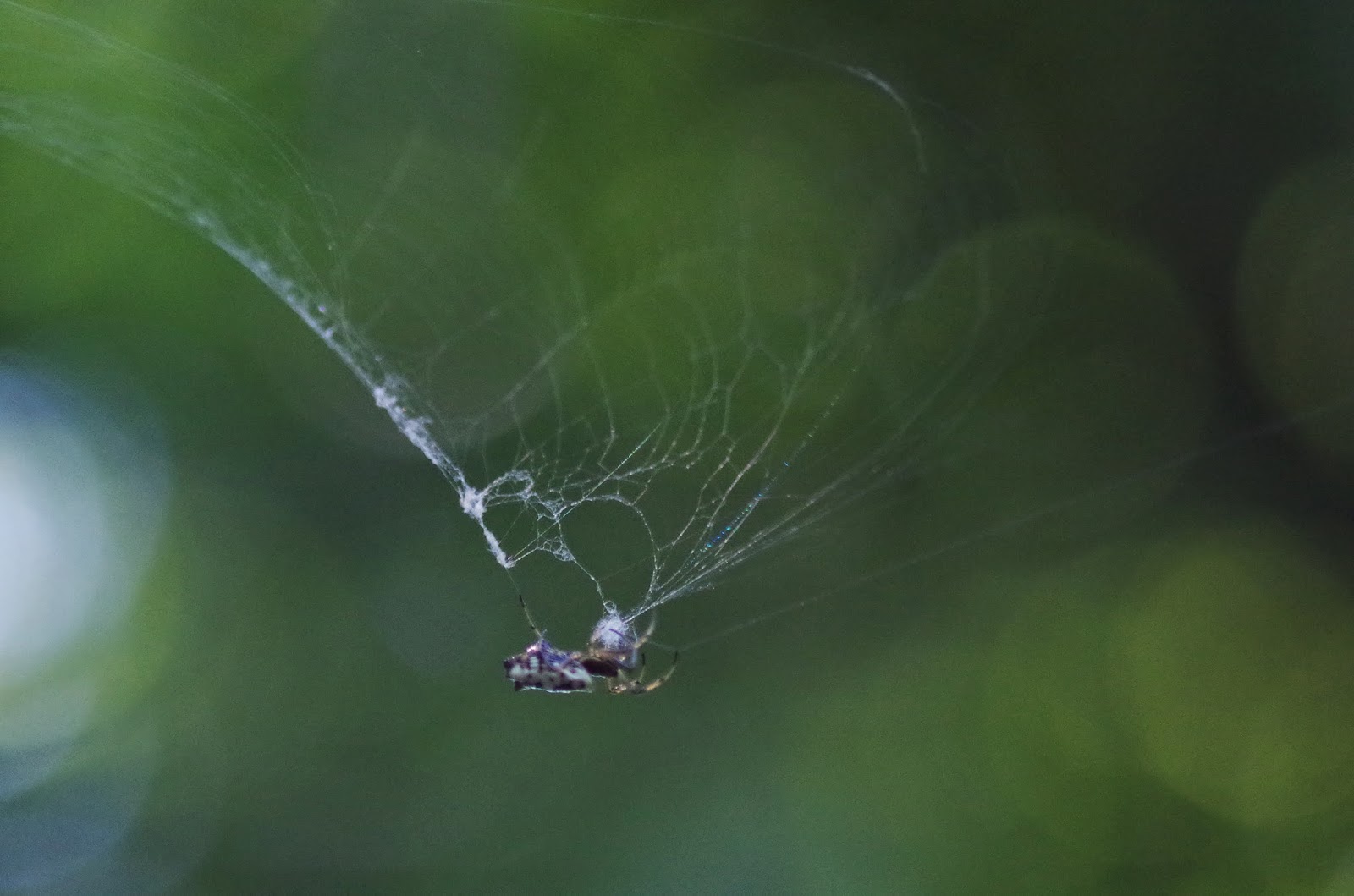My mind's a blank. I don't remember anything interesting happening on my bug walk today. It was just me and about a billion bees and wasps basking in the sunshine and listening to the songs of the bugs I couldn't see.
Backyard Bug of the Day:
Moth in the wild, doing yoga.
I found this in one of my books, the Lesser Grapevine Looper, and while I am excited to actually be able to identify this moth, I would rather know what it is doing. I find this pose anatomically confusing. The book only says that they often sit like this, "... in an odd posture with its abdomen curled up over its head."* It doesn't say why.
If it's a Looper then I think it means that its caterpillar is one of the inchworm types, but maybe it refers to this looped way of resting? Nah, I think it's the caterpillars.
Now, to give the lie to my statement about there being nothing but bees and wasps in the backyard today, Random Bugs:
Well, my theory about the little tree only having bugs in it at night is completely bust. Here are FIVE stinkbugs on the trunk at the same time...
And another on a leaf. I have never seen so many stinkbugs in close proximity in my entire life (except for newly hatched ones).
Bee, wasp, or hornet. Bright green! I wish I had been able to get closer.
Here is a story in photos of some bug rudeness. I was just about to take a picture of the brown bug here when a weevil crawled up over the edge of the leaf.
It could have walked anywhere, but it walked right up to the brown bug and gave it a shove.
The brown bug moved aside a bit...
And the weevil kept right on walking.
The End. Well, the plot wasn't much, but now you've seen into a moment in The Backyard. Considering how many insect interactions end with one or the other getting eaten, I guess this wasn't so bad. But really, have some manners.
This bug is one that I always think has its head on the other end until I look at it up close.
This one, too. I have sometimes taken pictures of what I thought was the face end, and then in looking closer realize it's the other end.
The face end is on the left in this picture.
And on the right in this one. I want to say these two are frog hoppers, but I can't find them in my books, so I don't know where I got that name from.
I don't know what's in here, but you can see it faintly.
Whenever I have read descriptions of the candy striped leaf hopper they always say it is turquoise and red, which I always think is wrong, because to me they look blue and red. Except for this one - this one looks turquoise and red.
I think you can see this caterpillar in the above picture of the bee.
I think every day this week I have spotted this dead leaf and thought it was a bug. I was going to remove it, but I decided I should just train myself to not react to it. Though in the picture it looks like there might be a tiny bug on it...
Soldier beetle
Two of the three praying mantises were still hanging around in the bush in front of the house.
Check out that leg.
No, the picture is not upside down.
Japanese beetle. I haven't seen one of those in a while.
I didn't get pictures, but I spotted a couple of really big dragonflies today - or maybe I spotted the same one twice. I realized I haven't seen one in a while. I used to see them a lot - toward evening, when the mosquitoes come out you used to be able to sit in the back yard and look up, and see a bunch of them zooming around catching mosquitoes, but not anymore. I am hoping it's the dry summer, and not anything more nefarious.
Arachnid Appreciation:
.
.
.
.
.
.
.
.
.
.
.
.
Have you heard of the psychological phenomenon Pareidolia, which is where you see something random, and your brain identifies something in it as being something else, specifically the tendency of humans to see faces in things? I see a skull in this spider web... But maybe that is not Pareidolia, maybe the spider is actually warning its victims of the danger. Hmmm... probably not.
I believe this is a spined micrathena, even though it's not very spiny (maybe those develop later?). I came across it as it was deconstructing its web.
In this picture you can see that the spider is balling up the web silk.
*Kaufman Field Guide to Insects of North America, by Eric R. Eaton and Kenn Kaufman































No comments:
Post a Comment